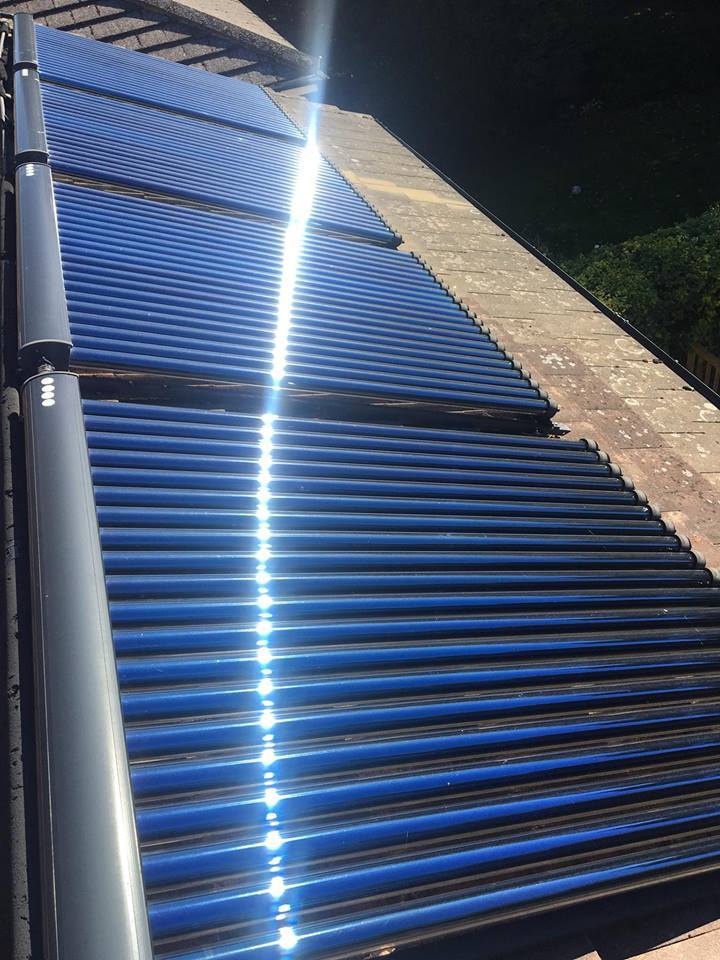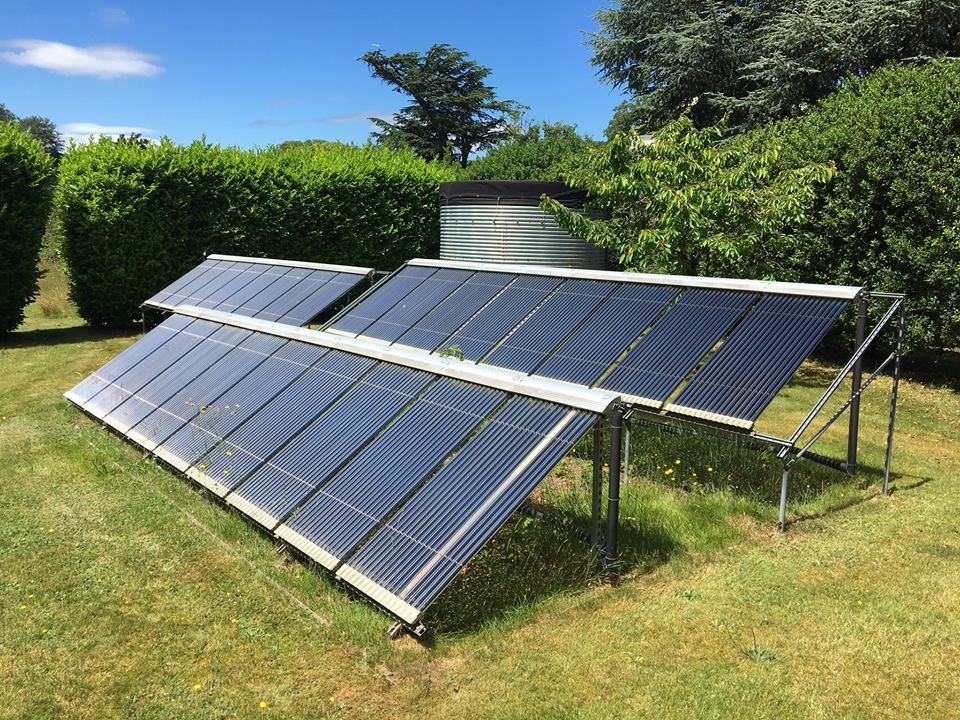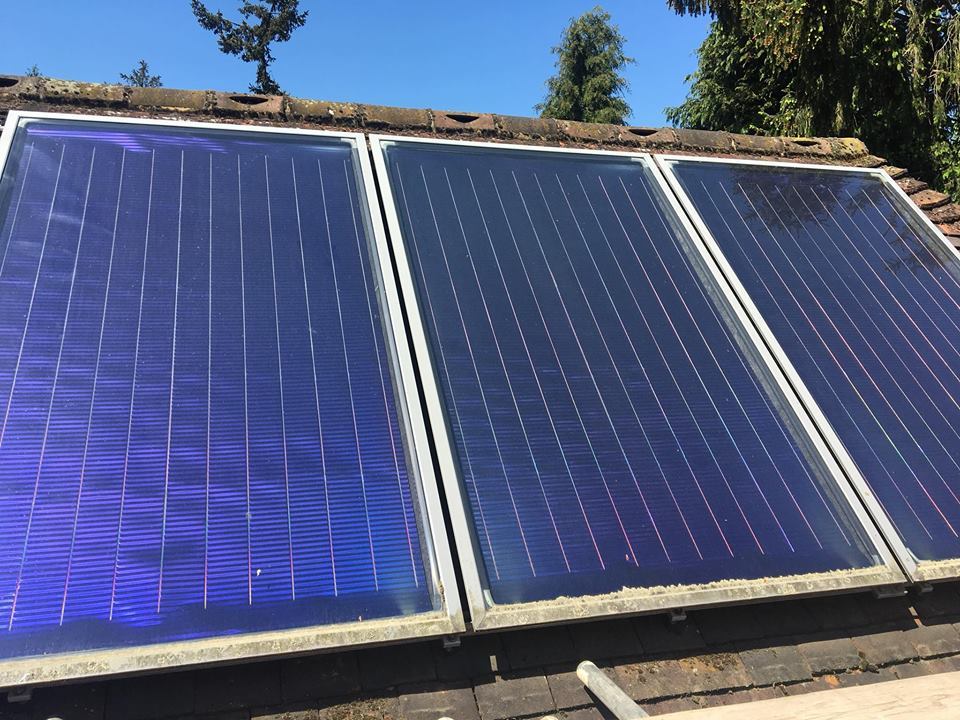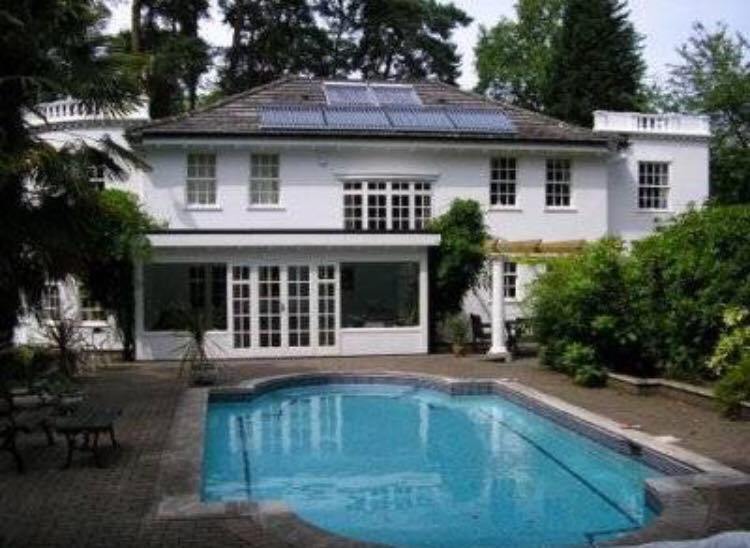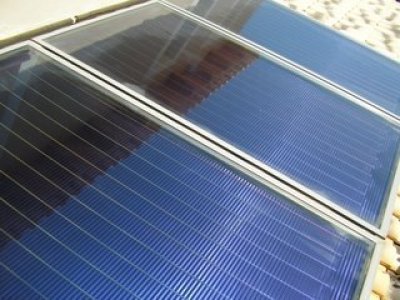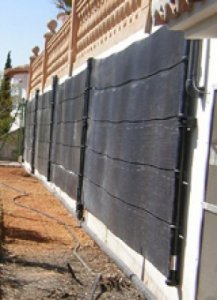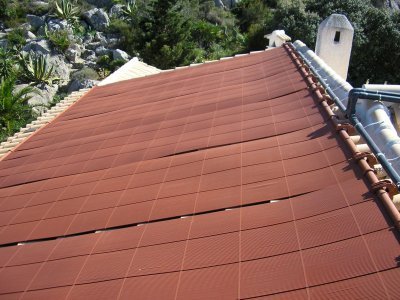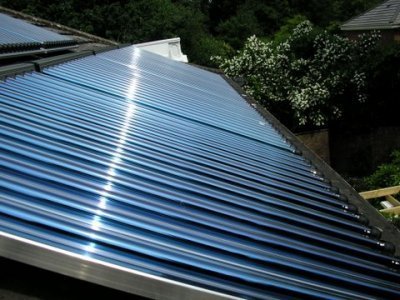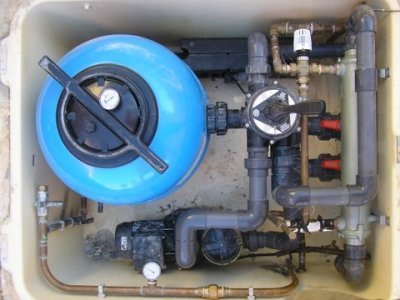Solar Pool Heating
Modern solar pool heating systems do not need direct sunlight to work only daylight, providing a greatly increased swimming season.
Why use a solar pool heating system?
- Provides a greatly increased swimming pool season, enjoy your pool!
- Compact, stylish, efficient advanced solar thermal collectors
- Much better output than traditional ‘direct’ ugly black plastic collectors
- Fully automated, require no user intervention and no winter drain down
- Indirect system, no scale or frost damage
- System designed with solar software showing system outputs and savings.
- We use the best swimming pool heat exchangers on the market, installed and guaranteed by professionals

A Solar Swimming Pool Heating System works like this…
An electronic solar controller constantly compares the temperature of the solar collectors, usually located on the roof of a building or frames in the garden with the temperature of the pool water. The temperature of the pool water is measured in the pool pipework in the plant room. Whenever the solar collectors are hotter than the temperature of the pool water, the solar controller switches on the solar systems circulating pump and the pool filtration pump simultaneously. A solar grade anti-freeze is then circulated through the solar collectors to a Bowman solar swimming pool heat exchanger. The solar heat exchanger is fitted to the pool pipework in the plant room or near to the filtration pump, heating the pool in the same way as a boiler. The solar heated pool water is then pumped back to the pool and enters the pool through the jets with the filtered pool water.
Most filtration pumps are operated by a time clock. As solar heat can only be transferred when pool water is flowing through the heat exchanger it is essential that the filter pump and solar primary circuit pumps run simultaneously. This is achieved by operating the pool filtration pump via a relay connected to the solar controller which will allow the filter pump to remain on timed operation and also switch it irrespective of timing whenever there is solar gain.
It is essential that the solar primary pump never operates without the filtration pump as the subsequent high temperature generated in the heat exchanger will distort the plastic filtration pipework which is only rated to 70°C with catastrophic results.
When we size swimming pool heating systems it is assumed that the normal temperature requirement for an outdoor pool is 24°C for competitive swimming or 28°C for leisure activities with a maximum pool temperature of 32°C.
Outdoor Pools
There are many variables when trying to size a solar swimming pool heating system to heat an outdoor pool, too many in fact to give any definite answers and expected solar gains and temperatures that will be experienced from week to week and month to month. You should however expect a typical swimming season pool temperature in the high twenties from a system sized to match 50% of the pool surface area. With 30°C being reached on the warmest days.
System Sizing
Solar swimming pool heating is, unfortunately, a somewhat inexact science. Since many factors determine the heating requirements sizing the solar collector area to 50% of the pool surface area should provide a reasonable amount of free solar heat to the end user.
BS 6785: 1986 Solar heating systems for swimming pools suggests a collector area equivalent to 50% of the pool surface area (where there is no auxiliary heating). However climatic variations of up to 15% of long-term averages are common and in any case air temperatures and windspeeds vary widely across the UK.
Winter Drain Down
Most outdoor pools are drained down during the winter months and it is essential that the customer also drains down the pool water side of the heat exchanger. Bowman heat exchangers incorporate a drain plug and must be drained down during winter to avoid frost damage.
Passive Solar Design
It would also be an advantage to design an outdoor pool with passive solar heating in mind. A dark coloured tile would draw more heat into the water and a transparent pool cover would also let sunlight heat up the pool when the pool isn’t in use. Designed like this the pool would act as a solar collector in its own right.

